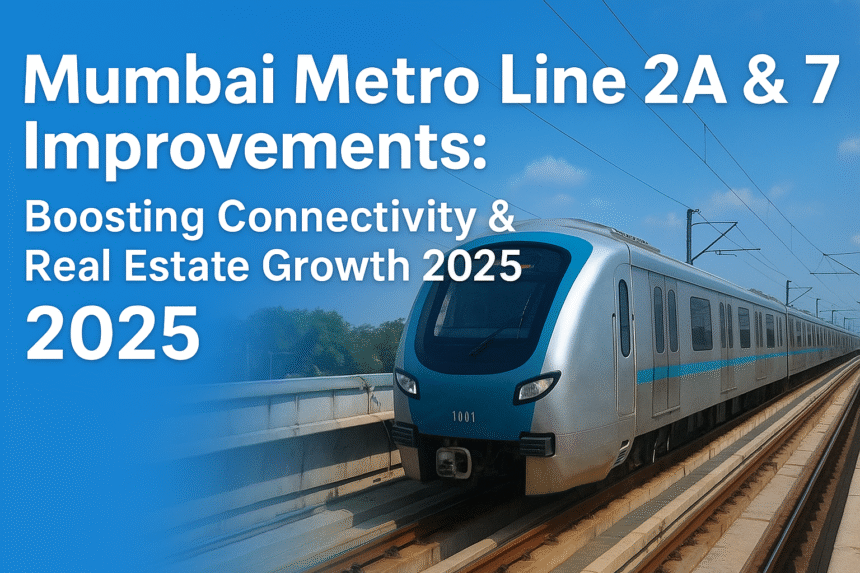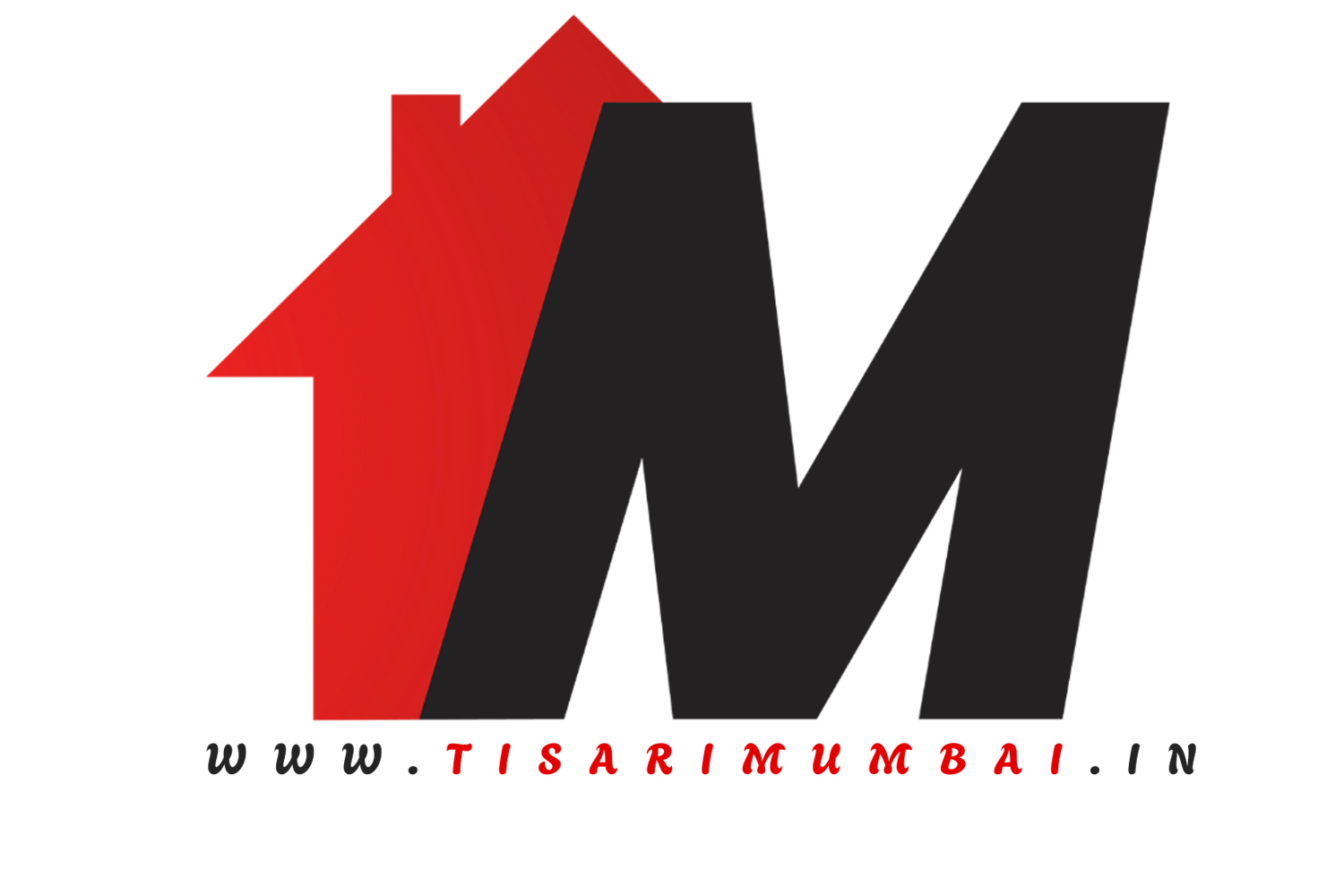Mumbai Metro Line 2A and 7 improvements are reshaping daily life across Greater Mumbai and its suburbs. Improved frequency, longer operating hours and better station facilities are already reducing commute times and making peripheral townships more attractive for homebuyers and investors. In this post we explain what changed, why it matters for property demand, where the growth pockets are, and how investors should act in 2025.
Mumbai Metro Line 2A and 7 improvements: What’s new
The most visible effect of the Mumbai Metro Line 2A and 7 improvements is more reliable service during peak hours. The MMRDA and operators have increased train frequency, extended operating windows, and upgraded station facilities — escalators, better signage and improved last-mile integration. These changes make commuting faster, safer and more predictable for daily riders.
According to the Mumbai Metropolitan Region Development Authority (MMRDA), Metro Lines 2A and 7 are witnessing daily service enhancements to keep up with the surge in commuter demand.
- Increased train frequency during peak hours, reducing waiting time.
- Extended operating hours, making it easier for late-evening commuters.
- Improved station facilities, such as escalators, ticketing machines, and safety measures.
These measures directly improve the daily travel experience for lakhs of passengers.
Why these improvements matter for commuters and buyers
For a city like Mumbai, where travel time often dictates lifestyle choices, better Metro services bring multiple benefits:
- Reduced Travel Time: Faster, more reliable commutes encourage people to live farther from their workplaces without compromising convenience.
- Decongestion of Roads: With more commuters shifting to Metro, traffic on arterial roads like the Western Express Highway eases, improving overall mobility.
- Affordable Connectivity: The Metro remains cheaper than private cabs or long-distance bus services, saving money for working professionals and families.
The ripple effect of the Mumbai Metro Line 2A and 7 improvements is straightforward:
- Shorter door-to-door times. When waiting times and transit times fall, people can live further from their workplaces without losing hours each day.
- Wider residential choice. Buyers who previously discounted suburbs for the commute are now looking at affordable housing and plot options farther out.
- Stronger rental demand. Working professionals prioritize homes near reliable metro stations — boosting rental yields in connected localities.
- Commercial uplift. Shops, co-working spaces and offices near metro hubs see increased footfall and higher rents.
These improvements don’t just help commuters — they change where developers choose to build next.
Areas that will benefit most
Because of the Mumbai Metro Line 2A and 7 improvements, we expect noticeable demand growth in corridors that connect to these lines or feed into them:
- Western suburbs along the 2A/7 catchment get more attractive for mid-segment housing.
- Transit-adjacent nodes (stations and feeder hubs) become natural hotspots for retail and services.
- Satellite townships and new town plans that link to the metro via feeder buses or feeder parking will see earlier adoption by families and professionals.
Impact on Real Estate Growth
The Mumbai Metro Line 2A and 7 improvements are already influencing property trends:
- Boost in Demand Around Stations: Areas like Dahisar, Andheri, Jogeshwari, and Goregaon are witnessing higher rental and purchase inquiries due to better connectivity.
- Expansion into Suburbs: As Metro networks improve, developers are pushing projects in suburbs like Mira Road, Vasai, and even further toward Navi Mumbai.
- Spillover into New Townships: Projects such as Tisari Mumbai and Mahamumbai stand to benefit as improved Metro connectivity makes long-distance commutes more practical.
If you’re watching for purchase opportunities, focus on blocks within a 10–20 minute last-mile radius of active metro stations.
Investment Insights
For investors, these Metro upgrades signal opportunity:
- Early Entry Advantage – Buying property now in Metro-connected corridors can deliver strong capital appreciation over the next 5–10 years.
- Rental Demand Growth – Working professionals prefer Metro-friendly localities, making rental yields stronger.
- Commercial Boost – Retail shops and office spaces near Metro stations benefit from higher footfall and accessibility.
5 Big ways the metro upgrades boost real estate (short list)
- Immediate rise in buyer interest around active stations.
- Improved rental yields due to higher demand from daily commuters.
- Developers shifting launches outward toward better-connected suburbs.
- Commercial and retail densification at station precincts.
- Long-term capital appreciation as transit networks mature and integrate with highways and airports.
These are direct outcomes we’re already seeing after the latest waves of service upgrades.
Risks & sensible precautions
No change is risk-free. While the Mumbai Metro Line 2A and 7 improvements underpin strong demand, investors should still:
- Verify project delivery timelines for nearby developments; avoid projects that promise unrealistic completion dates.
- Confirm legal titles and approvals before buying plots in peri-urban zones.
- Watch supply cycles — if many projects launch at once, short-term price jumps may moderate.
- Model cash flow conservatively for rental properties, accounting for vacancies and repairs.
Prudent buyers combine optimism about transit-led growth with careful risk control.
How to act now
- Map station catchments and shortlist properties within 15–20 minutes’ last-mile commute.
- Visit sites at peak hours to verify actual travel times after improvements.
- Talk to local brokers / developer offices about upcoming launches timed with metro milestones.
- Secure clean titles and check RERA/approvals.
- Consider staged investment—buy an entry-level plot or small apartment first then scale.
The Mumbai Metro Line 2A and 7 improvements create windows for early movers; those who prepare are likely to see the best yields.
Looking Ahead
With Metro Lines 2A and 7 fully operational and integration with other lines planned, connectivity across the Mumbai Metropolitan Region is entering a new era. These changes don’t just solve commuting challenges — they open up growth corridors for real estate, especially in the expansion areas of Navi Mumbai, Pen, Uran, and the proposed Third Mumbai region.
In short, Mumbai Metro Line 2A and 7 improvements are more than transport upgrades — they are a catalyst for widening the city’s liveable footprint and unlocking new real estate corridors. For buyers and investors, the immediate opportunities are near improved stations and feeder routes; for long-term capital appreciation, look for integrated developments that combine transit access with amenities.
The Mumbai Metro Line 2A and 7 improvements are more than transport upgrades — they’re catalysts for urban transformation. For commuters, it means faster and more reliable travel. For investors and developers, it signals rising property values and new growth opportunities in both established and emerging zones.
MMRDA news & announcements —
📩 Looking to explore investment opportunities near Mumbai’s expanding Metro network? Contact Tisari Mumbai to discover vetted plots and projects aligned with your goals.





